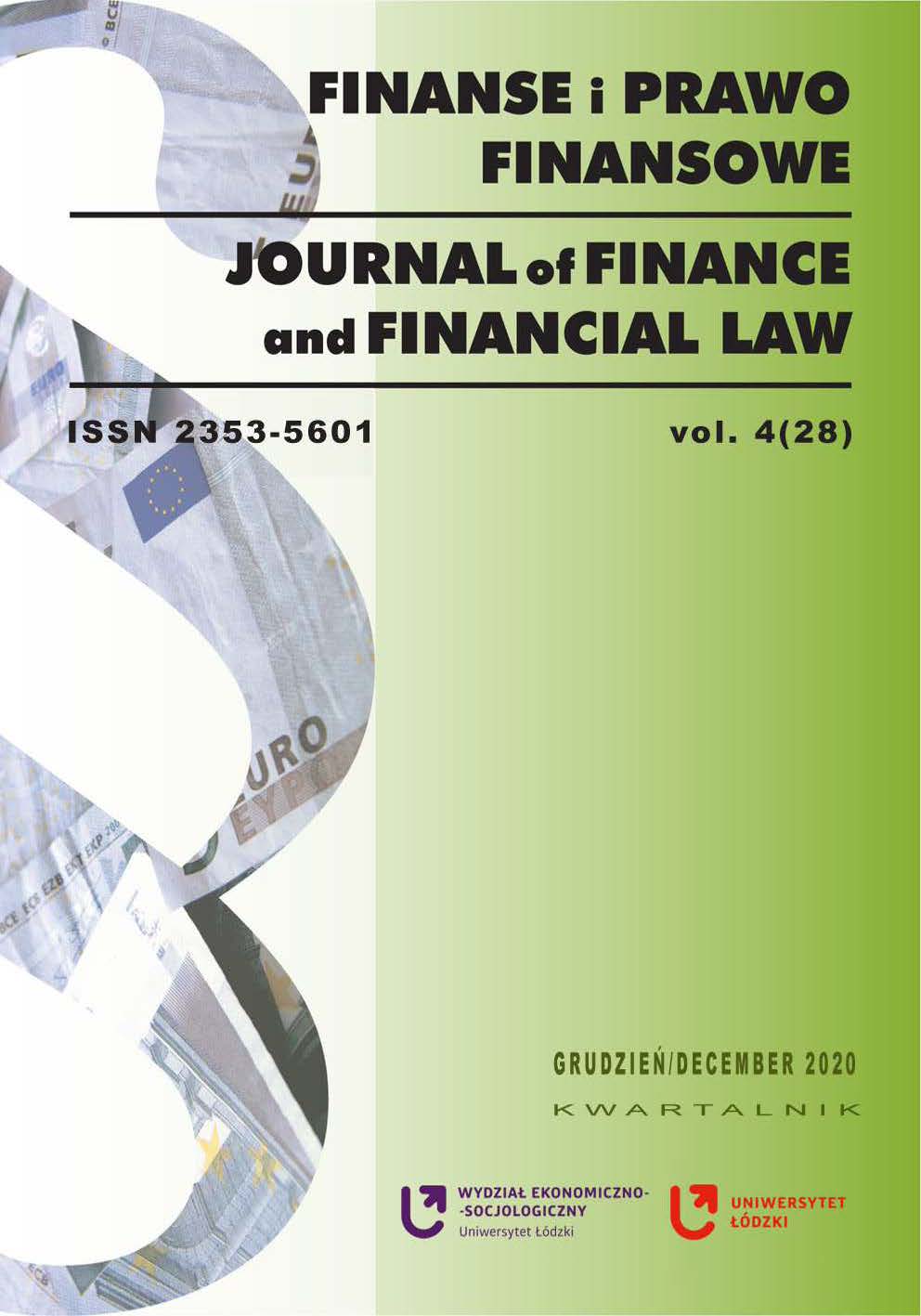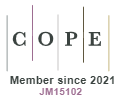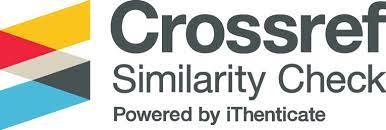Liquidity – Profitability Trade-Off on the Example of Companies Listed on Main and Alternative New Connect Markets on Warsaw Stock Exchange
DOI:
https://doi.org/10.18778/2391-6478.4.28.02Keywords:
liquidity, profitability, trade-offAbstract
The goal of this paper is related to the liquidity and profitability relationship analysis and their maxima assessment in the companies listed in the main and alternative markets of Warsaw Stock Exchange. The trade-off between maximum profitability and liquidity is the result of value maximization and bankruptcy prevention strategies and this approach is expected to be similar in all listed companies due to investors’ expectation. It has been found that there is no difference in management goals in the markets taken into consideration and companies in both research samples maximize profitability within a conservative approach to the liquidity. The maximum liquidity, on the other hand, is determined with a similar level of profitability as measured by ROE on the main market of WSE and NewConnect.
Downloads
References
Adamczyk A., Waśniewski P., 2018, Czy istnieje nadpłynność? Analiza związku między płynnością a rentownością, „Finanse, Rynki Finansowe, Ubezpieczenia”, nr 92.
Google Scholar
DOI: https://doi.org/10.18276/frfu.2018.92-01
Dalci I., Tanova C., Ozyapici H., Bein M.A., 2019, The Moderating Impact of Firm Size on the Relationship between Working Capital Management and Profitability, „Prague Economic Papers”, vol. 3.
Google Scholar
DOI: https://doi.org/10.18267/j.pep.681
Dash M., Hanuman R., 2009, A Liquidity-Profitability Trade-Off Model for Working Capital Management, „SSRN Working Paper Series”, no. 10, http://ssrn.com/abstract=1408722, [dostęp 30.09.2020].
Google Scholar
DOI: https://doi.org/10.2139/ssrn.1408722
Deloof M., 2003, Does Working Capital Management Affect Profitability of Belgian Firms?, „Journal of Business Finance & Accounting”, vol. 30, issue 3–4, doi: 10.1111/1468-5957.00008.
Google Scholar
DOI: https://doi.org/10.1111/1468-5957.00008
Desai J., Joshi N., 2011, Effect of Working Capital Management on Profitability of Firms in India, „SSRN Working Paper Series”, http://ssrn.com/abstract=1774686 [dostęp 30.09.2020].
Google Scholar
Eljelly A., 1991, Liquidity–profitability tradeoff: An empirical investigation in an emerging market, „International Journal of Commerce and Management”, vol. 14(2), doi: 10.1108/10569210480000179.
Google Scholar
DOI: https://doi.org/10.1108/10569210480000179
García-Teruel P.J., Martínez-Solano P., 2007, Effects of working capital management on SME profitability, „International Journal of Managerial Finance”, vol. 3, issue 2.
Google Scholar
DOI: https://doi.org/10.1108/17439130710738718
Hussain A., 2012, Aggressiveness and conservativeness of working capital: A case of Pakistani manufacturing sector, „European Journal Of Scientific Research”, vol. 73, issue 2.
Google Scholar
Jose M.L., Lancaster C., Stevens J.L., 1996, Corporate Returns and Cash Conversion Cycles, „Journal of Economics and Finance”, vol. 20, no. 1.
Google Scholar
DOI: https://doi.org/10.1007/BF02920497
Knauer T., Wöhrmann A., 2013, Working capital management and firm profitability, „Journal of Management Control”, vol. 24, issue 1.
Google Scholar
DOI: https://doi.org/10.1007/s00187-013-0173-3
Lazaridis I., Tryfonidis D., 2006, Relationship Between Working Capital Management And Profitability Of Listed Companies In The Athens Stock Exchange, „Journal of Financial Management & Analysis”, Jan–Jun, vol. 19, issue 1.
Google Scholar
Louw E., Hall J.H., Pradhan R.P., 2019, The Relationship Between Working Capital Management and Profitability: Evidence from South African Retail and Construction Firms, „Global Business Review”, vol. 12, doi: 0972150919865104.
Google Scholar
DOI: https://doi.org/10.1177/0972150919865104
Mahmood F., Han D., Ali N., Mubeen R., Shahza U., 2019, Moderating Effects of Firm Size and Leverage on the Working Capital Finance–Profitability Relationship: Evidence from China, „Sustainability”, vol. 11(7).
Google Scholar
DOI: https://doi.org/10.3390/su11072029
Nastiti P.K.Y., Atahau A.D.R., Supramono S., 2019, Working capital management and its influence on profitability and sustainable growth, „Business: Theory and Practice”, no. 20.
Google Scholar
DOI: https://doi.org/10.3846/btp.2019.06
Nazir Mian Sajid, Afza Talat, 2009, Impact of Aggressive Working Capital Management Policy on Firms’ Profitability, „IUP Journal of Applied Finance”, vol. 15, issue 8.
Google Scholar
Nobaneee H., AlHajjar M., 2009, A note on Working Capital Management and Corporate Profitability of Japanese Firms, „SSRN Working Paper Series”, no. 9, http://ssrn.com/abstract=1433243 [dostęp 30.09.2020].
Google Scholar
DOI: https://doi.org/10.2139/ssrn.1433243
Prasad P., Sivasankaran N., Shukla A., 2019, Impact of deviation from target working capital on firm profitability: Evidence from India, „International Journal of Productivity and Performance Management”, vol. 68(1).
Google Scholar
DOI: https://doi.org/10.1108/IJPPM-11-2018-0407
Richards V.D., Laughlin E.J., 1980, A cash conversion cycle approach to liquidity analysis, „Financial Management”, vol. 9.
Google Scholar
DOI: https://doi.org/10.2307/3665310
Vuković B., Jakšić D., 2019, The effect of working capital management on profitability: Evidence from southeast europe, „Ekonomika poljoprivrede”, vol. 66(1).
Google Scholar
DOI: https://doi.org/10.5937/ekoPolj1901159V
Downloads
Published
How to Cite
Issue
Section
License

This work is licensed under a Creative Commons Attribution-NonCommercial-NoDerivatives 4.0 International License.














